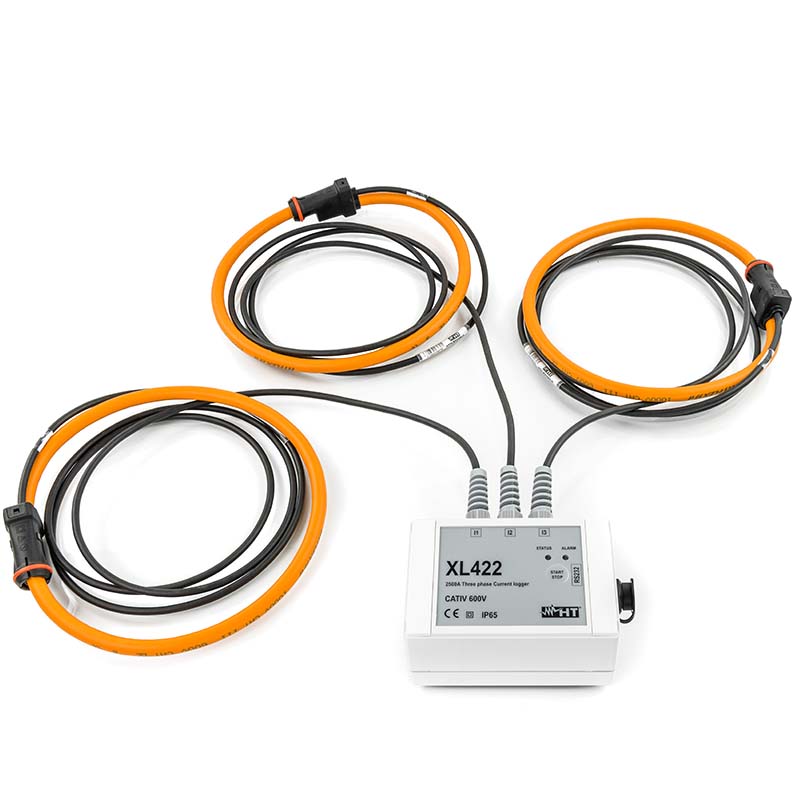A data logger – also commonly known as a data recorder – is a small and often relatively simple device used to measure and record specific data over a period of time, using an internal or external sensor. A data logger is used in applications where conditions are expected to change very slowly. If it is expected that high-speed recording is required, a DAQ (data acquisition) system would be used.
simple device used to measure and record specific data over a period of time, using an internal or external sensor. A data logger is used in applications where conditions are expected to change very slowly. If it is expected that high-speed recording is required, a DAQ (data acquisition) system would be used.
Different types of data loggers are available which range from a general purpose data logger to very specific data loggers. The most common types of data loggers include devices which can measure changes in voltage, temperature, current, vibration, sound frequency or light intensity.
Where are data loggers used?
Data loggers are used across a wide range of industries due to the varying nature of what they can monitor and record. They are typically used in experiments and in research and development where process monitoring is required and data is needed to be harvested, but it is not practical for a human to physically monitor the process and collate the data accurately.
For this reason, data loggers suit applications where conditions change slowly over time or where only very slow signals are produced, but where critical measurements are needed to be taken regularly and consistently over an extended period of time. So they are ideal for monitoring environmental conditions in warehouses or storage facilities, but other types of data loggers can also be configured to monitor electrical systems for surges, outages, glitches or short circuits which may only occur every few days, weeks or months. The XL422 SUPPLIED BY Test Instrument Solutions is a data logger capable of measuring and recording the true root mean square (TRMS) value of AC current in single & three phase electric systems for different applications. This device has integrated current transducers which can be clamped around a cable and left to gather data during the monitoring period.
Because data loggers are robust and simple devices, they can be left to perform the same task for weeks, months and even years. They are usually portable, stand-alone and battery-powered devices so, when configured correctly for your application, are very adaptable, reliable and robust.
How do data loggers work?
Data loggers can record any physical or electrical property that can be converted into an electrical signal. And they do this using a sensor which is either an integral sensor built into the body of the device, or using an external sensor that is attached as an essential accessory. Sensors should be regularly calibrated to ensure their sensitivity is sufficient to meet the parameters you are required to be monitoring.
In addition to the sensor, which is configured to measure the conditions you are monitoring, a data logger will be fitted with an internal microprocessor. This is the part of the device which gathers and stores the data. Some data loggers only use one single channel for the information they are monitoring, but it is common for data loggers to provide up to 32 channels. Multiple channels would be used for conditions where there are more diverse measurement ranges. The data logger will have either no visible interface at all, or a very simple LCD display with a numerical reading. This is because data loggers are not usually physically monitored – although they can be – so there isn’t usually a need for a visible display.
Data loggers store recorded data in their internal memory, which can then be downloaded after a specific time period for analysis. The memory capacity of a data logger is usually in kilobytes or megabytes, rather than gigabytes, because the sample rates being monitored are usually so low that only a low memory is required, even if the data logger is required to monitor data for a year or more. However, it is possible to off-load data to an external storage device to wipe the memory clean. With some models you can also use WiFi streaming to monitor the data remotely in real-time.
In addition to the XL422 current logger mentioned above, Test Instrument Solutions also offer their XL424 to log single & three phase voltages over time along with a PQA820 to monitor & record voltage, current, power, harmonics, Power Factor plus much more.